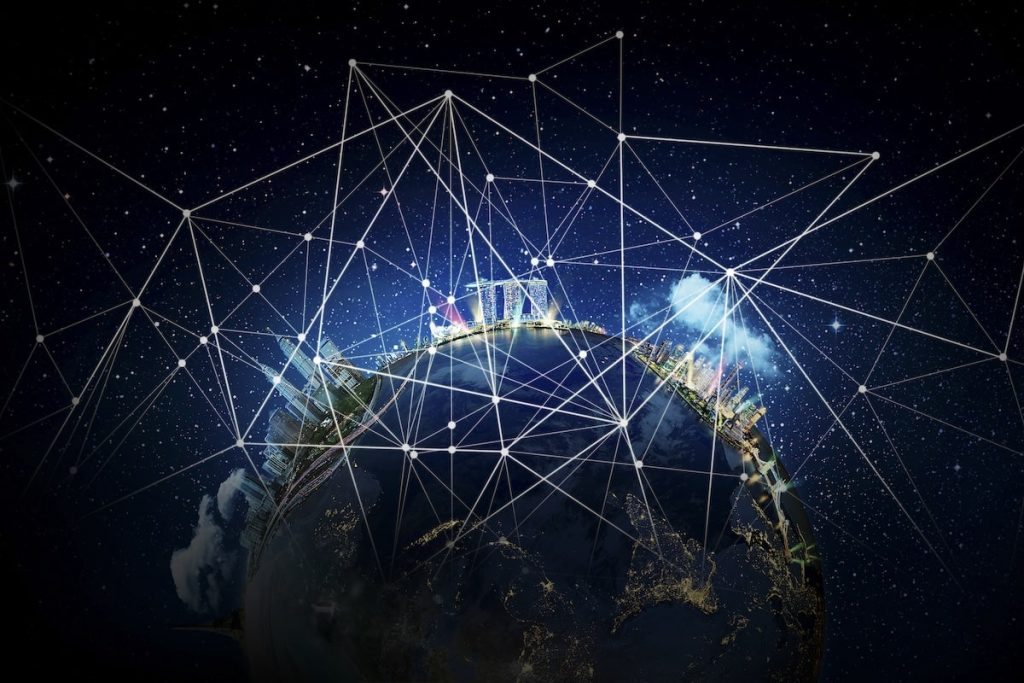
To reach businesses and individuals in need of protection in an increasingly digital world, cybersecurity companies must have a strong online presence. This industry faces its own unique set of challenges, including intense competition and the need to balance website performance with strong security measures. This is where SEO for cybersecurity comes into play. Beyond helping cybersecurity companies rank higher in search results, effective search engine optimization (SEO) also increases credibility and trust.
This article explores proven SEO strategies for cybersecurity, examines the key technological optimizations to consider for enhancing security and performance, and the various content marketing techniques that can help companies improve their rankings while maintaining a secure and trustworthy digital presence.
1. The Importance of SEO for Cybersecurity
Cybersecurity companies work in a specialized field where visibility and trust are critical. Companies that rank well in search engines are better able to draw in customers and build credibility. When prospective clients are looking for protection against digital threats, SEO for cybersecurity makes sure they locate reliable security solutions rather than the competition with weaker offerings.
Additionally, a solid SEO plan can:
- Boost brand credibility by positioning the company as an industry authority
- Improve cyber threat awareness by providing valuable, insightful content that educates users
- Increase organic traffic growth through targeted content that reaches the right audience at the right time
2. Key SEO Challenges in Cybersecurity
Despite its importance, cybersecurity SEO has its challenges:
- Intense competition: Many cybersecurity companies are vying for the same high-value keywords, so standing out in search results requires a strategic approach involving keyword optimization, high-quality content, and strong backlinks.
- Balancing security and SEO: Strict firewalls and content delivery network (CDN) security are examples of website security best practices that might occasionally conflict with crawlability, slow download times, and disrupt user experience – all of which can impact rankings.
- Regular algorithm updates: Keeping up with Google ranking factors 2025 is necessary to maintain visibility, and cybersecurity companies need to stay ahead of SEO trends to maintain visibility. Adapting to changes in E-E-A-T (Expertise, Experience, Authority, Trustworthiness) is essential for a cybersecurity firm’s long-term success.
- Managing compliance and regulatory requirements: Many cybersecurity firms operate in regulated industries where content must adhere to specific compliance guidelines. Therefore, SEO strategies must align with data protection laws (such as GDPR or CCPA), which may be a difficult balancing act when keeping content engaging and optimized for search.
- Establishing trust in a high-stakes industry: Cybersecurity as an industry is challenging, yet businesses must demonstrate their credibility through authoritative content, secure website infrastructure, and third-party validations such as certifications or client testimonials.
3. Google’s Trust Signals: E-E-A-T and Security
The Google E-E-A-T SEO framework plays an important role in ranking cybersecurity sites. Strong credentials, authoritative information, and robust security features—like SSL certificates for secure connections, safe browsing practices to ward off malware infections, and secure hosting to fend off cyberattacks—are all E-E-A-T factors that Google values highly. Cybersecurity websites can increase their exposure in search results and attain a secure website ranking by incorporating these components.
In addition, Google is made aware of the reliability and value of a cybersecurity firm’s website by user engagement indicators including low bounce rates, longer session durations, and positive user interactions. By combining these components, cybersecurity websites can improve their visibility in search results, build brand credibility, and rank securely while maintaining a solid defense against online attacks.
4. On-Page SEO Strategies for Cybersecurity Websites
To optimize on-page SEO, cybersecurity companies should:
- Write compelling title tags and meta descriptions that include keyword optimization for cybersecurity to attract clicks and maximize on-page SEO. Meta descriptions should be concise, engaging, and include a call-to-action to encourage user engagement.
- Use H1, H2, and H3 headers effectively, including related keywords naturally. Headers should improve readability and help search engines understand what the page is all about.
- Optimize for technical SEO tips, like appropriate URL structure and schema markup, by using short, keyword-rich URLs and using structured data to enhance search engine results.
- Use internal linking to connect similar pages and guide visitors toward additional valuable content to enhance user experience and SEO.
- Include multimedia elements, such as infographics and videos, to improve engagement and encourage users to spend more time on the page.
- Optimize images with descriptive filenames and alt text to improve page load speed and accessibility.
5. Technical SEO: Enhancing Security and Performance
- Website speed optimization: Improving load speeds through caching, image compression, and fast hosting reduces bounce rates and enhances user experience
- Mobile responsiveness: A mobile-friendly cybersecurity site that works well on mobile devices helps with accessibility and ranks higher in mobile search results
- Secure coding techniques: Avoiding security flaws like SQL injections and XSS attacks that could hurt SEO and compromise user data
- HTTPS implementation: Ensuring SSL encryption helps maintain secure connections, as Google favors HTTPS sites over HTTP in rankings
- Fixing broken links and redirect issues: Regularly checking for 404 errors and improper redirects prevents a poor user experience
Read More: Common SEO Errors and How to Fix Them for Better Rankings

6. Content Marketing for Cybersecurity SEO
Success in cybersecurity SEO requires content marketing. Developing informative, keyword-rich content increases engagement and fosters trust. Among the most successful content marketing techniques are:
- Writing authoritative blog posts on cyber threats
- Creating case studies, whitepapers, and thought leadership pieces to highlight security expertise
- Video content explaining common security threats
- Infographics simplifying complex cybersecurity concepts
- Webinars featuring expert insights to help engage different types of users
- Evergreen content—such as cybersecurity best practices and compliance guides—ensuring long-term search visibility while providing ongoing value to potential clients
7. The Role of Backlinks in Cybersecurity SEO
Backlinks for cybersecurity sites improve search rankings and domain authority. Ethical link-building techniques include:
- Guest blogging on reputable cybersecurity websites
- Obtaining links from research publications and industry reports
- Building partnerships with influential figures in technology and security
In summary, high-quality backlinks reinforce credibility and improve secure website ranking. For example, earning backlinks from government, educational, and cybersecurity certification sites further strengthens domain authority and trust.
8. Local and International SEO for Cybersecurity Companies
Local SEO for tech companies should be a top priority for cybersecurity companies that target regions.
Some of the key strategies include:
- Optimizing Google My Business listings with accurate geographical information
- Attracting local clients through localized keywords and material that are relevant to the area
- Multilingual SEO implementation for businesses with global operations
- Using HREFlang tags ensures the right language version of the website appears for international users
9. Common SEO Mistakes Cybersecurity Websites Should Avoid
Many cybersecurity companies can prevent SEO mistakes, such as:
- Keyword stuffing: Filling sites with keywords rather than integrating them organically
- Duplicate content: When the same content is published on several pages, it degrades rankings
- Ignoring security updates: Ignoring updates can leave websites open to hacking, which can lower reputation and search engine results
- Poor internal linking: A weak internal linking structure can make it more difficult for search engines to crawl and index pages effectively
- Neglecting image optimization: Large, unoptimized images can slow down page load speeds, negatively impacting both SEO and user experience
10. The Impact of Site Speed and Mobile Optimization on SEO & Security
Fast-loading pages and a mobile-friendly cybersecurity website are essential for both search engine rankings and user experience. The elements that affect SEO are:
- Google’s Core Web Vitals which gauge the speed and interactivity of websites
- Slow-loading webpages increase bounce rates and have a negative effect on rankings
- Unsecured websites discourage visitors and decrease trust, which lowers visibility even more
- Optimizing images and scripts can enhance load times, improving both SEO and user retention
- Implementing responsive design ensures that users across all devices have a seamless experience, reducing bounce rates
- HTTPS encryption is critical, as Google prioritizes secure sites, and users are more likely to trust websites with SSL certificates
Conclusion
For cybersecurity companies wanting to succeed online over the long term, SEO strategies and website security best practices must be balanced. Cybersecurity companies can improve their search ranks and credibility by concentrating on SEO compliance and security, using technical SEO tips, and steering clear of common mistakes.
Get in touch with WiRe Innovation for expert help implementing SEO for cybersecurity. To further refine your strategy, explore our guide on common digital marketing mistakes.



